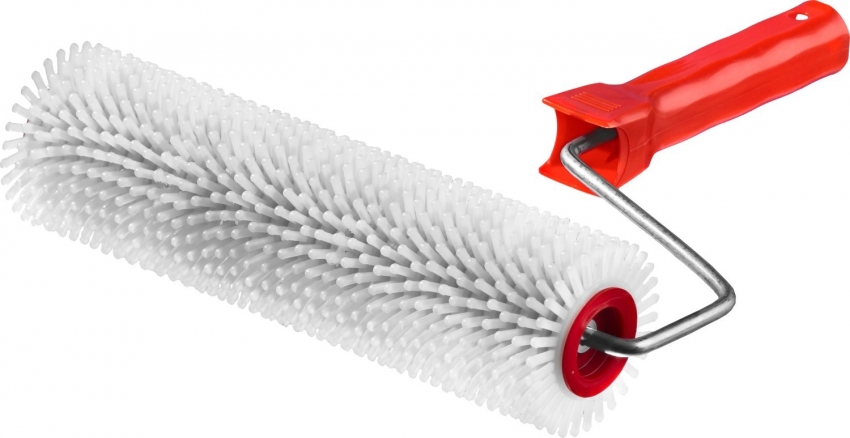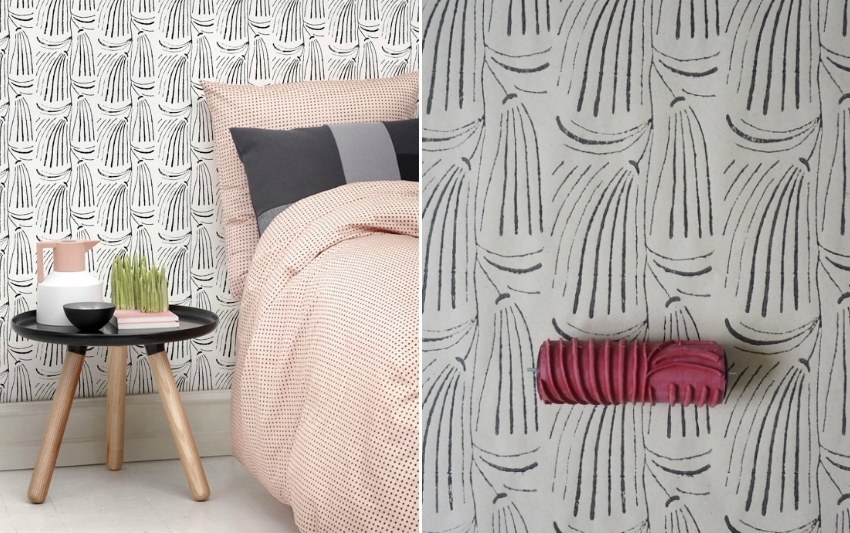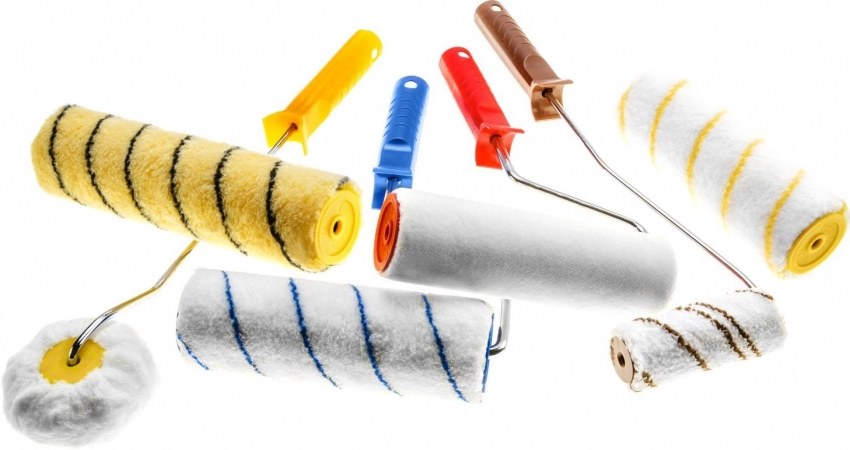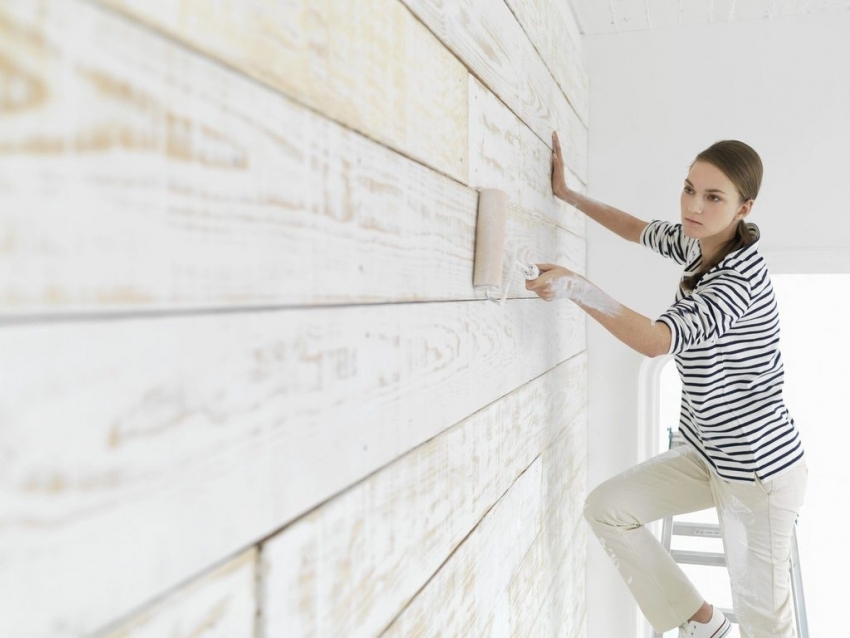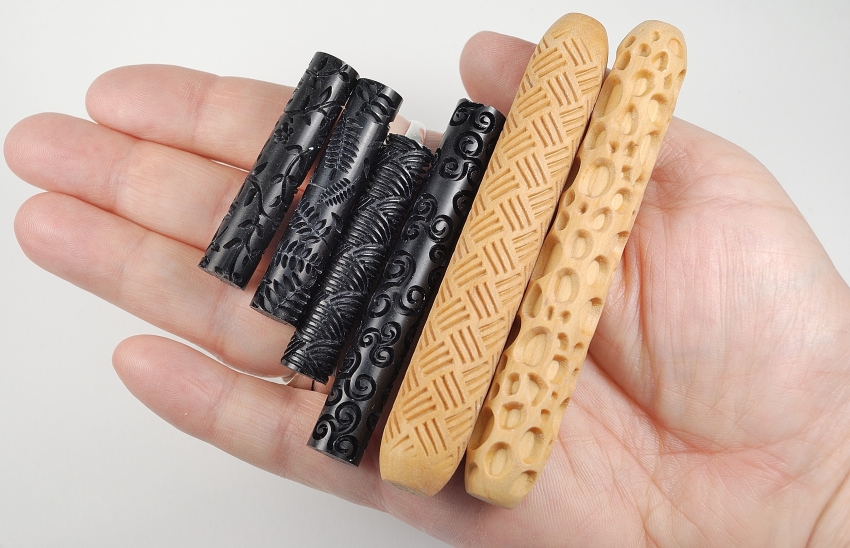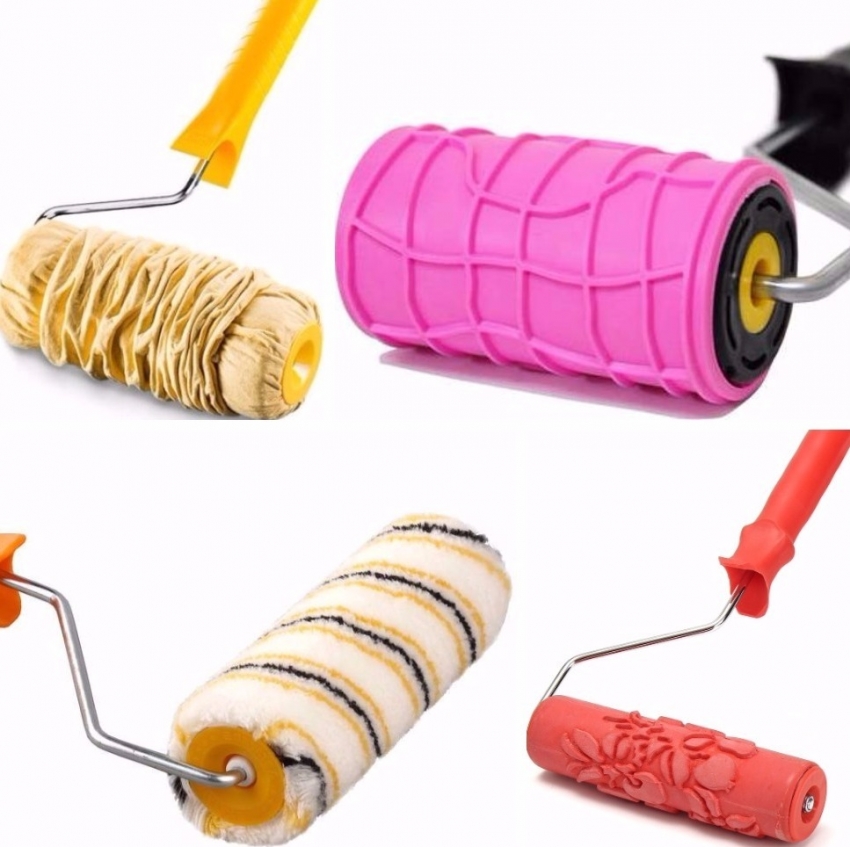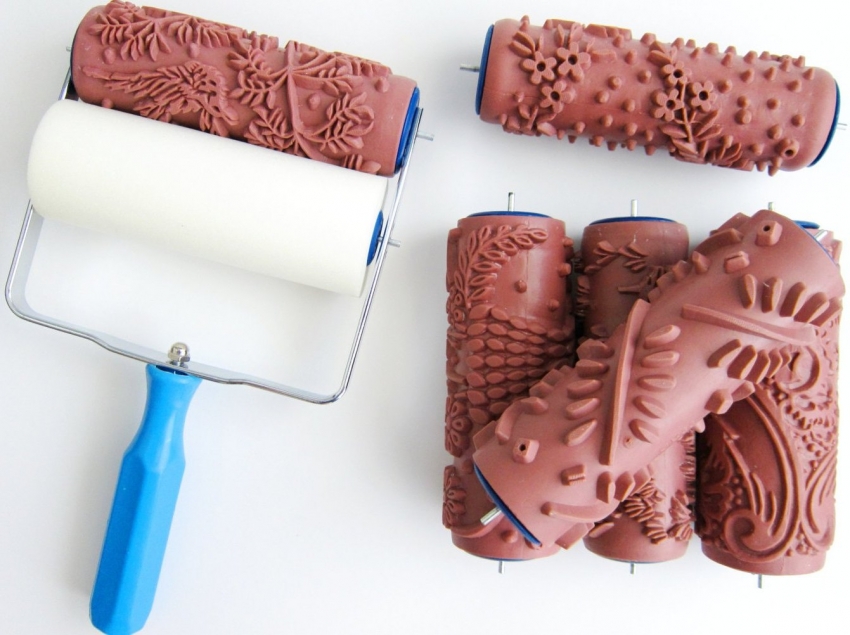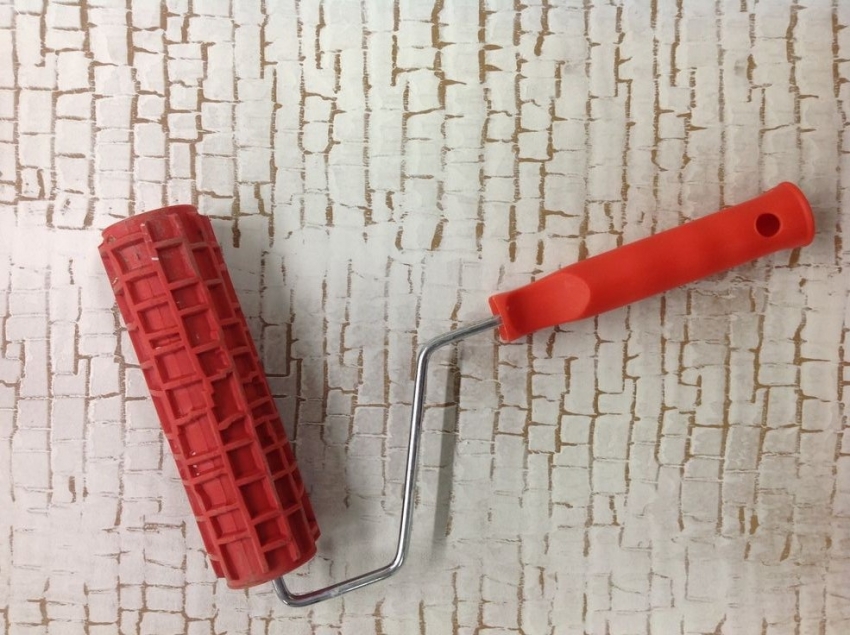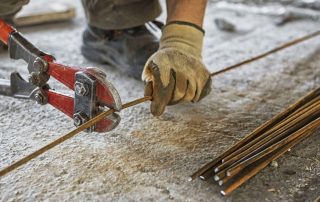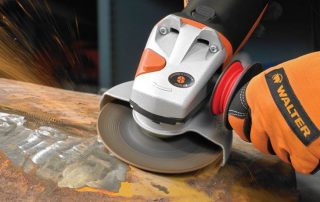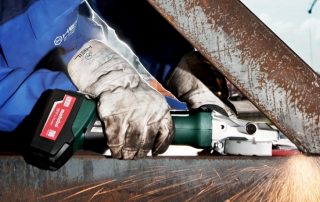To create an original interior, and in particular, a decorative wall covering, you can use a wide variety of tools, among which the decorative wall roller is far from the last place. This is one of the easiest ways to paint a wall without resorting to complicated and expensive technologies. Let's consider what you should pay attention to when choosing and using this tool.

With the help of a decorative wall roller, you can quickly and easily transform the interior by decorating wallpaper or a painted surface with interesting ornaments
Content [Hide]
- 1 Decorative roller for walls: what it is, and how it works
- 2 What are the sizes of the paint roller
- 3 Which decorative wall roller to buy: varieties of fur coats
- 4 Other types of rollers: special types of tools
- 5 Textured rollers for decorative plaster and wall painting
- 6 How to paint walls with a roller: the correct technology for applying paint
- 7 Tricks of painting the ceiling with a roller: video instruction for beginners
Decorative roller for walls: what it is, and how it works
The main task of the roller is to give the surface of the wall or ceiling the desired color and texture. It can be used to work with absolutely any paint, although sometimes it is also used for plaster, thus giving it a certain texture. But before you buy one or another model, you should familiarize yourself with the general structure of this tool.
Components of a paint or decorative roller:
- The clasp is a kind of bracket that serves as a base for the roller. Its curved shape allows you to fix the handle on one side and the roller itself on the other, giving the structure integrity.
- The handle is the part that you will hold in your hand during work. As a rule, plastic, wood or rubber are used for its manufacture. For the convenience of work, special depressions are made on it, which allow you to comfortably position your fingers and prevent slipping in your hand.
- The roller is the main part of the roller, which has a cylindrical shape and is put on the side of the clasp opposite from the handle. In this case, the roller rotates freely. Usually metal or plastic is used as a material for manufacturing.
- The coat is the part directly with which the paint is applied. It is worn over the roller and is most often made of foam rubber, fur or velor.
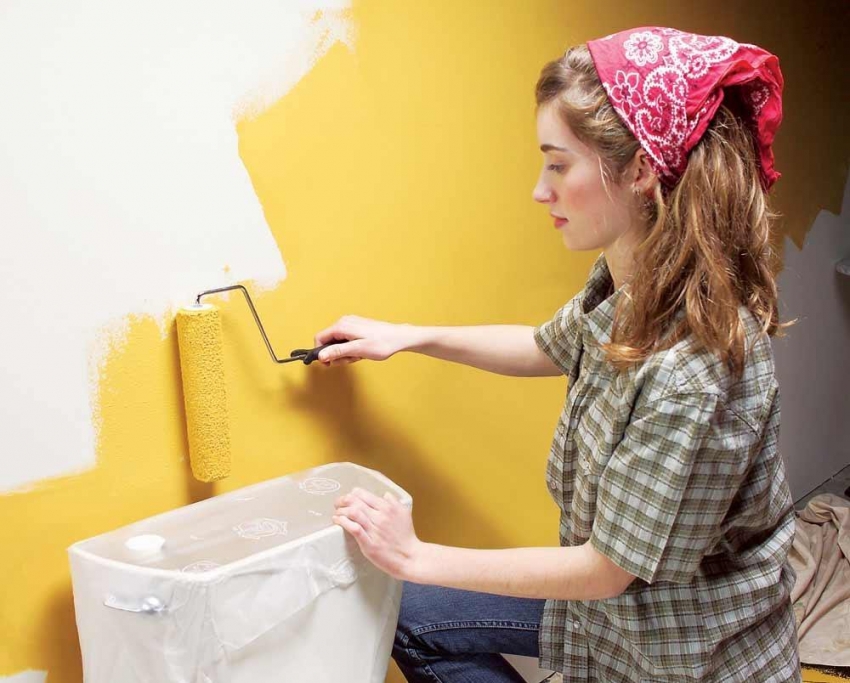
The paint roller is one of the most convenient tools for painting walls, ceilings and other surfaces.
Such a simple, but at the same time well-thought-out design allows to significantly increase the productivity and speed of painting, and also reduces paint consumption. In addition, in the process of work, drips and splashes are practically not formed, and the quality of painting the wall is many times higher than what can be achieved using a conventional paint brush.
Important!Much depends on the quality of the purchased roller. But if earlier all products of this type were checked for compliance with GOSTs, today on sale you can find almost any model in terms of quality. That is why, in the selection process, you need to be as careful as possible and pay attention not only to the appearance of the tool, but also to the OKPD 2 paint roller.
What are the sizes of the paint roller
The purpose and size of the roller are characteristics that are directly related to each other, since the convenience of work in each case depends on the right choice. For example, if you need to paint a large flat surface, then it would be wiser to use a roller, the working part of which is as wide as possible. But for working with corners, a small tool is better suited. So, there are the following sizes of rollers for decorative wall painting:
- mini rollers. They make it extremely convenient to work on small areas and difficult surfaces. The diameter of the roller in this case does not exceed 15 cm, and the width of the working surface is usually no more than 150 cm;
- midi rollers. This tool has a slightly larger working surface (from 150 to 250 mm). In this case, the roller diameter can be from 50 to 90 mm. Such rollers are considered universal, as they are great for most jobs and are quite convenient to use. They are acquired more often than others;
- front rollers. These are the largest and widest tools with a working surface exceeding 250 mm. The roller diameter can be up to 80 mm. Such rollers are considered professional and are almost never used in everyday life. Moreover, in order to work with such a tool, one must have certain skills and some experience.
It is necessary to choose a roller by size, taking into account the individual capabilities and experience of the master, as well as the characteristics of the surface with which to work. At the same time, the midi roller is almost always perfect and copes with all the tasks without any problems.
Helpful advice!The larger the working surface of the roller, the more paint it can absorb. Therefore, you should not choose too large models, as some difficulties may arise in the process of work, and you will quickly get tired.
Which decorative wall roller to buy: varieties of fur coats
A fur coat is perhaps the most important criterion for choosing a roller for painting walls and ceilings. After all, the final result and the appearance of the surface depend on this. Therefore, it is worth considering what kind of roller coats are:
- rubber rollers are made of soft or hard rubber. Often, such tools have a pronounced texture and are used to give relief to the plaster, as well as to apply a pattern to wallpaper or a painted surface.
- polyamide - made of synthetic fiber, which is characterized by extremely high wear resistance. At the same time, on sale you can find options with different pile lengths, which can be from 8 to 20 mm. These rollers are ideal for working with water-based paints;
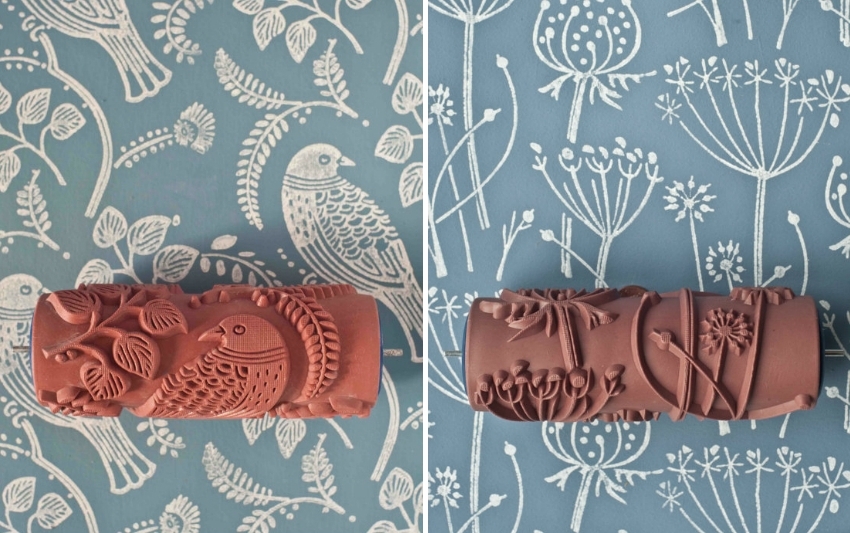
The decorative rubber roller can have a different texture, with which you can create interesting drawings and ornaments on the wall
- a fur coat made of natural fur, which is most often sheepskin. This option is also ideal for working with water-based paint, as well as with oil and various varnish compositions. Obviously, the price of a paint roller with such a coat will be higher than all others;
- A velor roller is usually used when a finishing coat is required. Alkyd enamels and oil paints are best suited for this purpose;
- polyacrylic paint roller is similar to polyamide roller. It is characterized by high resistance to aggressive components of the composition, and therefore is suitable for working with any paints;
- Foam rubber is another material widely used to make rollers. But in the process of working with it, you need to be careful, and among all the compositions, it is suitable only for water-dispersion paints. In the process of painting the surface, do not apply too much pressure, as this can cause drips. But the speed of work with such models is several times higher than all other options;
- Terry rollers are made of polyester, which is the cheapest raw material. In this case, the price of a paint roller per piece can be from 60 rubles, but one cannot count on a long service life of such a tool. Therefore, usually such rollers are used once or twice to work with water-dispersion or acrylic paint, and then they are simply thrown away;
- A short-haired or flocked roller is the best option when working with a water-borne varnish. But you need to know in advance that such rollers are strictly prohibited to be used for working with water-based paint.
Each type has its own advantages and disadvantages, so before you buy a roller for decorative plaster or wall painting, you need to take into account the features of each model.
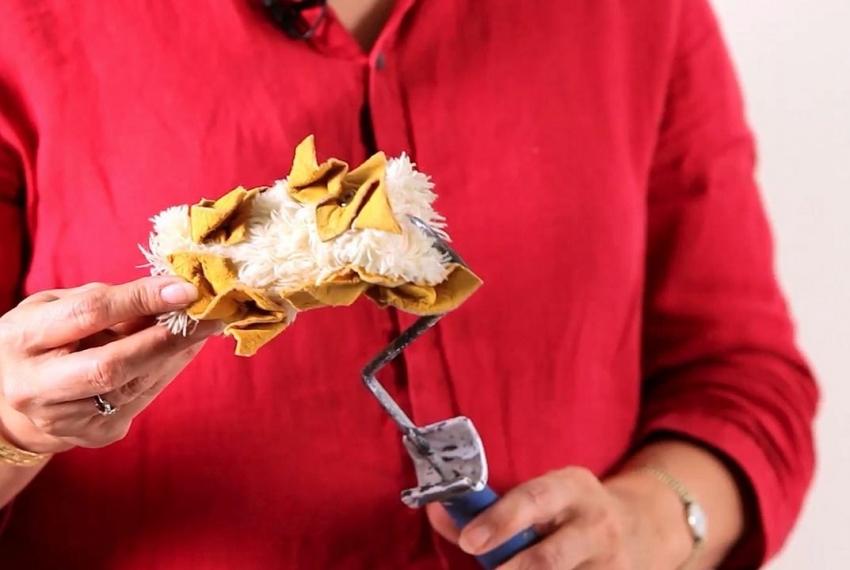
To create an interesting texture on the wall, rollers with a fur coat made of various materials are used
Helpful advice! Nevertheless, the most durable and reliable are synthetic coats, that is, polyamide and polyacrylic, since they are characterized by the greatest resistance to aggressive substances.
Other types of rollers: special types of tools
In addition to the standard rollers, the types and characteristics of which have been listed, there are several other unusual types, which are used only in special cases. So, the following types are distinguished:
- corner rollers. This device is a small wheel with a rather narrow working part. Usually, polyamide, polyacrylic or velor is used as the material. This simple device makes it possible to paint as accurately as possible even in the most inaccessible places, which simply cannot be reached with a regular roller;
- needle rollers. In this case, the working surface of the product is covered with rubberized spikes, designed to eliminate air bubbles that often remain between several layers of paint. Most often this tool is needed when working with viscous paints;
- structural rollers for decorative plaster or paint. The variety of such models is really great, and thanks to such an instrument, a variety of effects can be created on the surface;
- rolls for pipes. Most of all, they resemble large scissors, since the clasp is equipped with two rotating knitting needles on which two rollers are attached. In this case, the size of the tool is selected in accordance with the diameter of the painted pipe.
Textured rollers for decorative plaster and wall painting
A textured roller for decorative plastering or painting the wall surface is a special type of tool that is represented by a wide variety. You can buy it ready-made or make it yourself, using an old roller and scrap materials as a basis.
Related article:
Paint for walls in an apartment: properties, types and recommendations for use
Advantages and disadvantages, varieties and features of coloring compositions, prices. Choice of dye and optimal color scheme.
A textured roller is a great way to decorate the surface without resorting to too complex and expensive technologies. And in order to make sure how unusual and beautiful the effect of using a textured roller for painting walls can be, just look at the photo examples presented on the Internet.
How to choose the right roller for painting the ceiling and walls: expert advice
The sheer variety of different rollers can confuse almost anyone. So in order not to be mistaken in the choice, it is worth again paying attention to all important aspects and following the following recommendations of specialists:
- before you buy a roller, check it right in the store. To do this, crumple the coat with effort and evaluate the deformation. If the fur coat is wrinkled too much, then it is better not to buy such a roller;
- when buying a roller with a long pile, the coat must be inspected first to make sure that the fibers do not fall out. Otherwise, you will have to face hairs on the surface of the painted wall or ceiling;

For high-quality surface painting, when purchasing a nap roller. pay attention to the quality of the pile attachment
- if you are not sure which roller is suitable for which paint, it is best to give preference to the universal option, which is, for example, polyamide rollers;
- if you have to paint the walls in an apartment, then a roller with a short handle will be enough. But if you pay attention to how to properly paint the ceiling with a roller, you can see that there are special telescopic handles for this;
- The clasp of the roller should not be too soft, as this can cause deformation, which in turn will affect the quality of the surface painting and the durability of the tool.
By following these simple but extremely important guidelines, you can purchase a quality roller that will allow you to get a quality surface finish with the minimum amount of time and effort.
Helpful advice! If you need to work with several colors at once, it is not at all necessary to purchase several rollers. It is much easier to buy additional fur coats that can be changed on the roller as needed. In addition, this way you can save a lot.
How to paint walls with a roller: the correct technology for applying paint
Choosing and purchasing a quality tool is not all. It is equally important to figure out how to paint the walls with a roller, and what rules you need to follow in order for the result to meet your expectations.
How to paint correctly with a roller is a question that at first glance may seem strange and even inappropriate. After all, given the simplicity of the design, it may seem that it is almost impossible to make a mistake in the process of work. In fact, there are several subtleties that must be taken into account in order to end up with a perfect surface.
First of all, you need to pour the paint into a specially designed tray, the size of which will allow you to freely dip the roller into it. In this container, special corrugations are provided, along which the roller must be rolled so that the paint is evenly distributed over the entire surface of the fur coat. This must be done several times.
After that, you can start painting, however, you first need to decide on the scheme for painting the room. Usually they start from the corner of the room, which is located by the window.
Another important aspect that many experts pay attention to is how to properly paint the walls with a roller without marks. According to professionals, it is enough to adhere to the following rules:
- the pressure on the roller should not be too strong;
- when using a textured roller, the second layer of paint should be applied only when the substrate is completely dry;
- with full color, the presence of gaps and poorly painted areas should not be allowed;
- every movement should be performed smoothly;
- the roller must be evenly carried out in the direction from bottom to top, and then back;
- ideally, the movement should be directed slightly diagonally away from you.

In order for the drawing to be clear and even, it is necessary to control the amount of absorbed paint with a roller
Helpful advice! Video can be an excellent assistant in your work. How to paint walls with a roller without streaks can be seen in the corresponding training video, where all the subtleties and nuances of this work are clearly revealed.
How to paint the ceiling with a roller: features of work and recommendations of specialists
Particular attention should be paid to the technology of painting the ceiling, since it is somewhat more difficult to work with such a surface. Many are interested in which roller to paint the ceiling, and here it is worth paying attention to the following aspects:
- the rougher the surface of the ceiling, the longer the pile of the roller coat should be;
- for painting the ceiling, it is best to use a roller, the length of the rod of which is approximately 25-40 cm;
- if there is a seam on the fur coat, stripes will remain on the painted surface, which is not very good if you want to make the surface smooth and beautiful.

Before painting the ceiling, it is necessary to seal the corners and all protruding surfaces with masking tape.
Otherwise, you can make a choice based on the standard types and sizes of paint rollers, using all the same guidelines as when choosing a tool for painting the wall surface.
Tricks of painting the ceiling with a roller: video instruction for beginners
You can find out all the subtleties of painting the ceiling with a roller by watching the corresponding video, which clearly demonstrates each stage of work.
